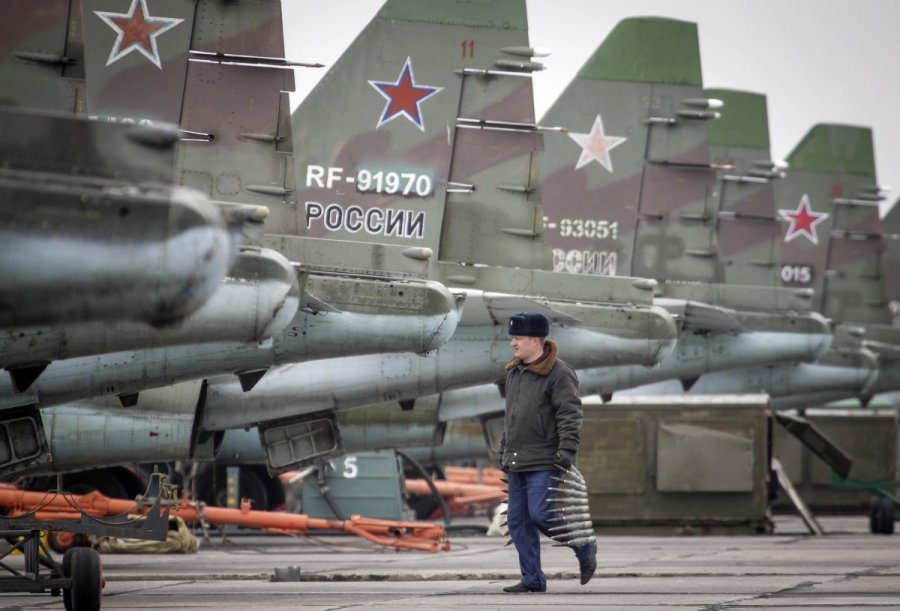By: William Robinson

Russia’s pipelines are not just the foundation of its resurgent economy but the weapon of choice for Russia’s aggressive foreign policy. These pipelines, an interconnected web spanning Eastern European countries that pumped 7 billion barrels of gas daily in 2012, have been used to extort business concessions and influence electoral behavior, and remain a tool for Russian leverage today.
Russia’s energy and political sectors are inseparable. Transneft, which owns Russia’s oil and refined product pipelines, and Gazprom, which owns a natural gas monopoly and the majority of Russian gas production facilities, are both state-controlled. Furthermore, the “leadership of Russian oil and gas firms and the Russian government are dominated by former members of the Russian intelligence service … or are personally close to Putin, or both,” according to a Congressional Research Service report to members of Congress. Former President Dmitri Medvedev even headed Gazprom before succeeding Putin. Granted political benefits, government contracts, and protectionist policies, these companies provide considerable government revenue in return—Gazprom being the single largest contributor to the Russian government’s budget.
Beyond their domestic collusion, the Russian energy industry and Russian foreign policy are often one and the same. In 2006 alone, Russia cut off natural gas to Ukraine, Moldova, and the Baltic states and threatened to cut off natural gas to Georgia and Belarus – all for political reasons. In Ukraine for example, Russian impositions of higher gas prices (a 360 percent increase in 2005) directly followed pro-EU Prime Minister Yushchenko’s election and abated following pro-Russia Prime Minister Yanukovych’s election. Elsewhere in the region, the gas shutdowns—all during winter months—resulted in Russian acquisition of domestic refineries, ports, and storage facilities. This was most successful in Moldova, where Russia acquired 63.4 percent of MoldovaGaz’s shares, and Armenia, where Russia acquired almost all of the domestic energy structure.
This use of Russian oil pipelines to manipulate the former Soviet bloc met with considerable outcry from the affected countries. Indre Makaraityte, editor of Revival (an independent Lithuanian newspaper), said, “We became members of NATO and EU expecting we would be defended immediately … There’s a fear of Russia, and a fear that we are again alone, not defended by our Western partners. They are too naïve in evaluating Russia.”
New York Times reporter Adam Ellick agreed. He wrote from Vilnius, Lithuanina in 2007, “The signs of Russia’s resurgent influence are everywhere in Lithuania, Estonia and Latvia: in Kremlin-financed media; in the financing of local politicians and economic development; in a growing assertiveness, encouraged by Moscow, among the third of the Baltic population of Russian heritage; in the Kremlin’s manipulation of its energy supplies as a bludgeon [emphasis added].”
This belligerent manipulation of gas supplies is road-blocked by Ukraine. Russia’s Bratsvo (Brotherhood) pipeline travels expansively through Ukraine en route to Germany and Austria, and from there to Italy. This pipeline carries 80 percent of all Russian gas exports to Europe, according to The Ukraine Oil & Gas Report. Therefore, Russian demands for higher prices meet demands for higher transit fees, and gas shutoffs to Ukraine meet outrage from Germany, Austria, and Italy. Unlike some of its neighbors like Moldova and Armenia, Ukraine has kept control of its domestic gas structures, meaning this resistance to Russian influence has persisted. To circumvent this resistance, Russia has pursued attempts at constructing a pipeline through the Black Sea and expanding pipelines across the Baltic.
Whereas Ukraine typically stands opposed to Russian influence, Belarus has remained a close ally since the fall of the Soviet Union in 1991. Nonetheless, Russian foreign policy there is hardly distinguishable from their policy elsewhere in the region. As recently as 2010, Russia, Belarus, and Kazakhstan formed a customs union. Though Belarus predicted reduced tariffs and subsidized oil prices, they in fact received increased prices and higher tariffs. The price hikes were so costly that Belarus chose to import oil from Venezuela rather than pay for the Russian oil that flows through their own borders on its way to Western Europe, according to the Stratfor Analysis.
Fast-forward to the current turmoil in Ukraine, and it is clear that Russia sees its sphere of influence far beyond its current borders. American and EU diplomats are scrambling to send aid to Ukraine and counter Russian influence—hardly the methodical and calculated approach of Russian foreign policy. Many are forecasting a more concentrated Russian effort when the Olympics in Sochi conclude, as noted by New York Times reporter Celestine Bohlen.
“What might be Russia’s options?” Bohlen asked. “Anders Aslund, a senior fellow at the Peterson Institute for International Economics in Washington, lists four: a trade war, a gas war, covert actions, and threat of military force … What is clear is that Russia will have a role in Ukraine, overt or covert, no matter what the West has to offer in terms of aid or advice.”
Russia has shown its familiar Cold War hand, using tools such as gas pipelines and trade policies to wield influence. In the face of this clear and consistent instigation, it is time that the United States and EU take seriously their roles in supporting Eastern Europe. Financially and politically (through aid, election monitoring, and more), Eastern Europe needs an alternative to Russian influence, lest Russia is allowed to become the imperial bear it once was.


